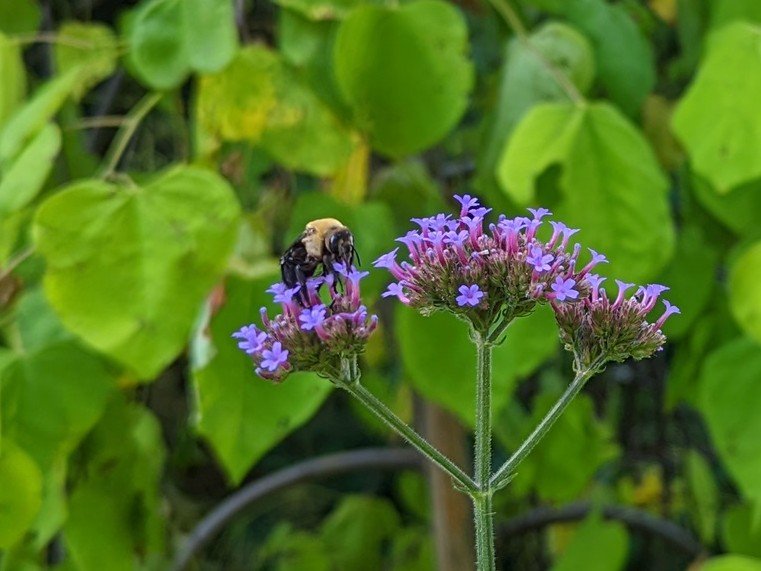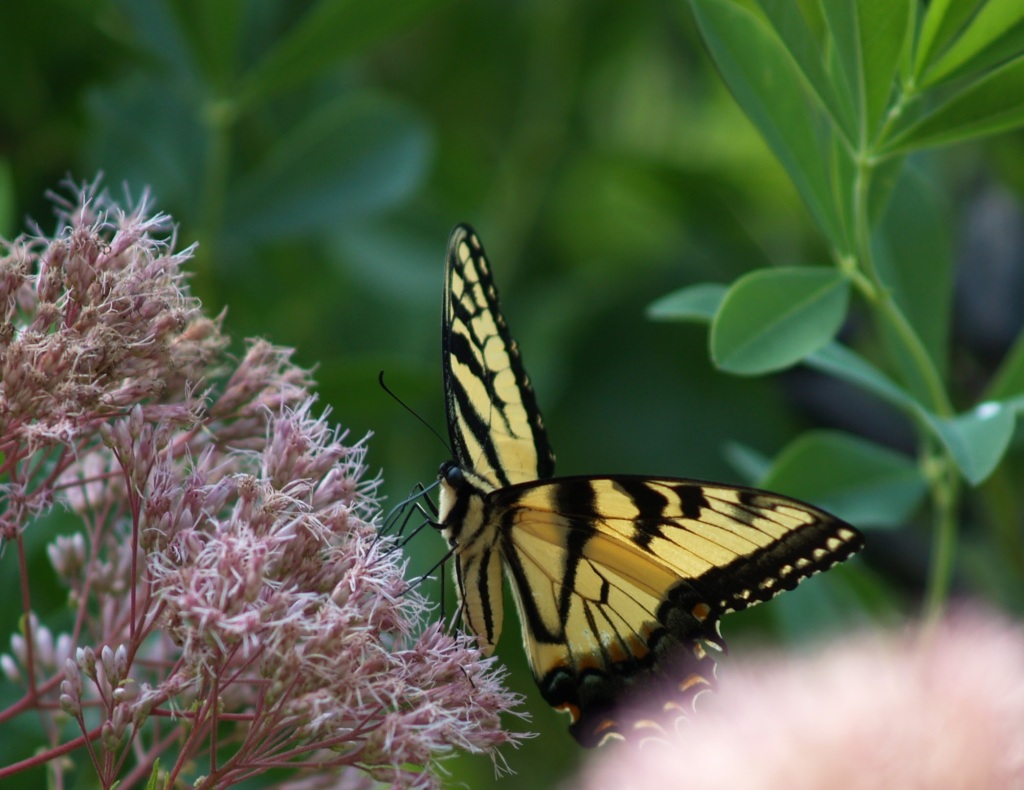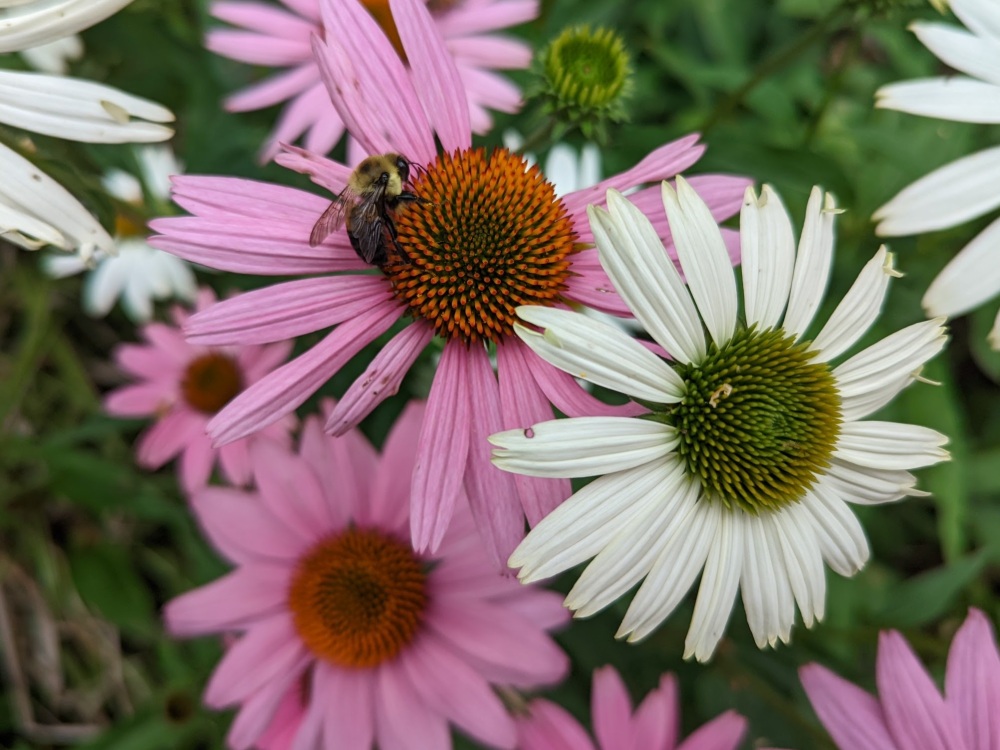In early July I continue to be frustrated by rabbits that are nibbling tall perennials, particularly ones that are newly planted and most in need of foliage to survive. Yesterday, I was confronted with an additional concern as I crossed paths with a youngster, and of course this is what rabbits do, breed and nibble. I suppose they eat something, but I see no sign that stalks of foliage and flower left behind were eaten. I’ve asked nicely that they not continue this annoying habit, but expect they are not good listeners. In any case, I expect I’ll have to learn to live with this increasing population.

The number of birds seems to have increased in recent years, I suppose as a correlation to the growth of the garden, and it’s no wonder that Japanese beetles and various caterpillars are more scarce. At one time, beetles regularly nibbled fronds of Ostrich ferns, but this year and last I’ve seen none. A couple were spotted one afternoon on one of the dark leafed crape myrtles, but little damage was seen and no beetles have been observed since. Beyond the garden there are acres of neighborhood lawns, so I expect there are plenty of beetles around, just not once the property line is crossed.


Unsurprisingly, there are plenty of bees and other various pollinators in the garden. While honeybees and carpenter bees that look much like bumblebees are ever present, there are many smaller bees when you look closely. The many Joe Pye weeds (above) and the large patch of mountain mint (below) are just beginning to flower, and once they’re flowering it seems that every pollinator in the county gets the word.


The population of dragonflies (below) has also increased this year, so the number of the annoying tiger mosquitoes in the vicinity of the koi pond is nearly nonexistent. In case a reminder is necessary, the keys to attracting wildlife to the garden are flowers and foliage, water, and shelter. This garden has each in abundance.

How nice to see Honeybees in your garden Dave. We used to see them as early as January/February thaws, but for the past two years we have not seen so much as one at any time. So sad.
Honeybees are off and on, but once mountain mint is flowering they appear in abundance.
Have you considered using rabbit repellant devices that give off both flashing lights and ultrasonic sounds, when they detect a rabbit/small animal via infrared? I just bought such a device, but am having mixed results.
Perhaps I’ll get desperate enough to try such a gadget, but for now I’ll try to grow tiny plants in containers to a larger size before planting in the ground.